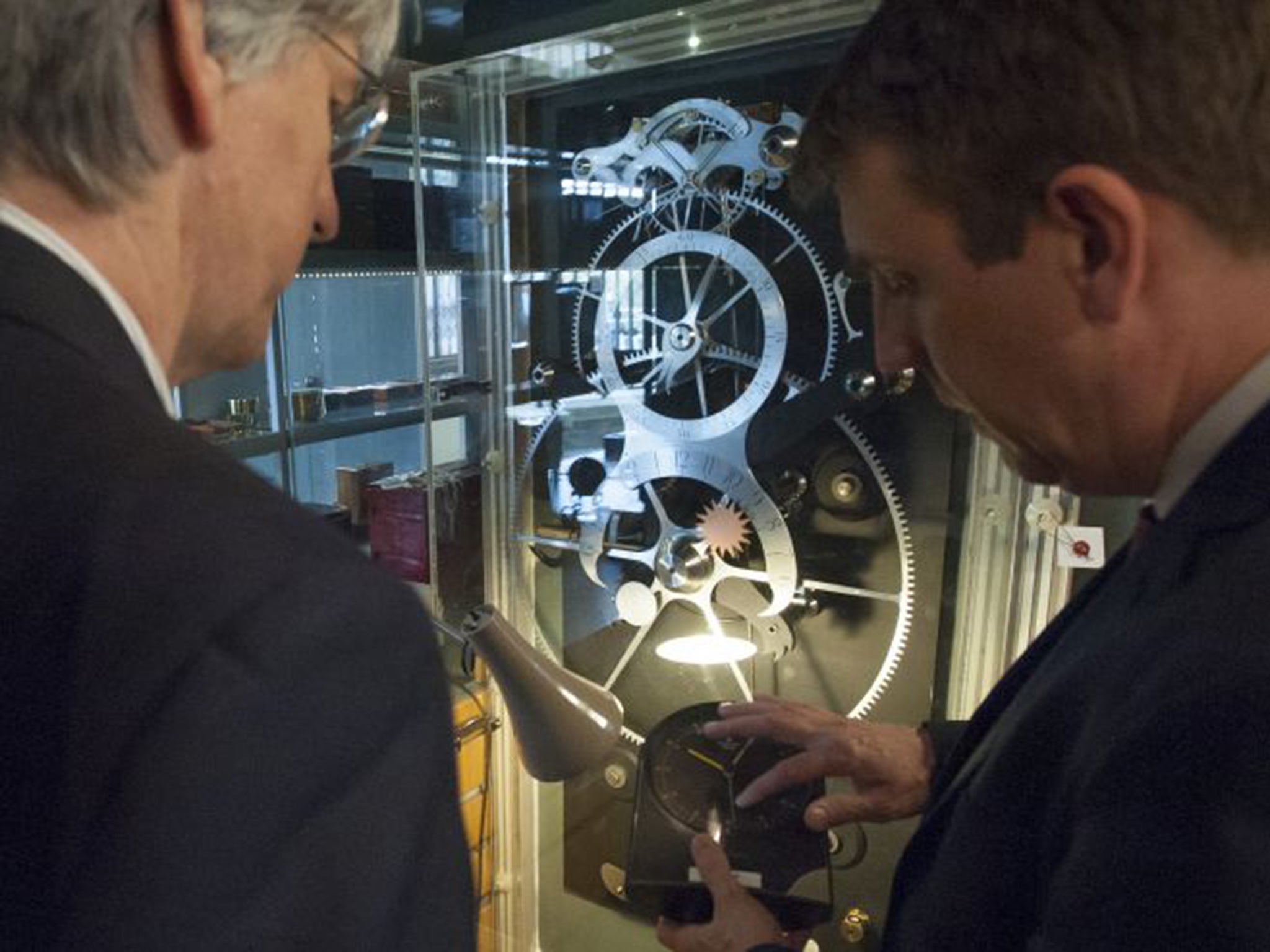John Harrison's 'longitude' clock sets new record - 300 years on
Greenwich horologists celebrate as it keeps to within a second of real time over a 100-day test

Down in a basement room of the Royal Observatory, Greenwich, history was quietly made one morning last week, witnessed by a dozen experts in horology – the esoteric science of measuring time.
Bolted for stability to one of the supporting pillars holding the Observatory’s 18-ton telescope, stands a timepiece with a difference. Designed 300 years ago but completed only now, this chronometer officially became “the most accurate mechanical clock with a pendulum swinging in free air”, certified by Guinness World Records.
As the clock’s pendulum swung with a remorseless rhythm, the experts crowded round the sealed Perspex case containing the clock’s elaborate metal workings. They agreed that it was still accurate to within a second of real time, measured by a radio-controlled clock receiving the national time signal and the BT speaking clock ringing out in the background.
For the past 100 days, the clock has been part of an official trial to see if it could keep time as well as its inventor, 18th-century clock designer John Harrison, had claimed. Harrison, who was the subject of Dava Sobell’s bestselling book Longitude (1995), which told the story of his solving of the problem of determining longitude at sea, had boasted that his latest pendulum clock would neither lose nor gain more than a second in 100 days. Last Thursday morning his claim was shown to be as accurate as the timepiece he had designed.
The clock, known as the Martin Burgess Clock B after its modern-day maker, was set ticking a year ago but it soon became apparent it was going to be a record-breaker, which is why the Observatory placed wax seals on its Perspex case for a certifiable 100-day trial.
“Today sees the culmination of a trial within a trial,” said Jonathan Betts, a member of the Antiquarian Horological Society and senior specialist in horology at the Royal Observatory. “As soon as we set the clock running it was clear that it was performing incredibly well, so then we got the case sealed because nobody was going to believe how well the clock was running.” In his later years, Harrison had left instructions on how to build the clock in an obscure book, which was so hard to read it became known as “the ramblings of superannuated dotage” by later horologists.
“It was a claim that Harrison made and a claim nobody believed because the best clocks of the day couldn’t do better than about a second a week, if they were lucky,” Mr Betts said. “So the idea that somebody was going to keep time to an accuracy of a second in a 100 days was preposterous. It was only in the 20th century that people thought that Harrison may have been right.”
Mr Burgess, with the help of the Charles Frodsham company, based the clock on Harrison’s designs but used modern materials, chiefly duraluminium and invar (a nickel-iron alloy). The mechanism, however, is from Harrison’s instructions.
“This does not claim to be a replica of Harrison’s clock. It claims to be the use of Harrison’s design and concept. It’s important to realise his design goes against everything the establishment has claimed is the best throughout history,” Mr Betts said.
Traditional clockmaking argued that a heavy pendulum bob and a short swing would make for good timekeeping. However, Harrison thought the opposite and designed a clock with a relatively light pendulum bob and wide swing. “That was such a radical difference it was another reason why they didn’t believe it. They thought it was rather heretical,” Mr Betts explained.
Rory McEvoy, the Observatory’s curator of horology, said Clock B had performed better than anyone had expected. “What we’ve seen here is something approaching a perfect clock, but we’re not there yet. We know we can adjust it to make it even better,” he said.
Profile: John Harrison
John Harrison, born in 1693 to a Lincolnshire carpenter, is best known as the man who solved the problem of longitude. The Royal Navy had lost many ships at sea because although latitude could be determined by the height of the sun, longitude was more difficult to determine.
Harrison thought the problem could be solved, and the Longitude Prize of £20,000 that went with it won, by designing a clock carried at sea that could keep time to within about a minute over 50 days. By knowing the time the ship had been at sea, and knowing local time from the height of the sun, it would be possible to determine longitude accurately, as local time is one hour ahead for every 15 degrees of longitude eastwards and one hour behind for every 15 degrees west.
Subscribe to Independent Premium to bookmark this article
Want to bookmark your favourite articles and stories to read or reference later? Start your Independent Premium subscription today.

Join our commenting forum
Join thought-provoking conversations, follow other Independent readers and see their replies